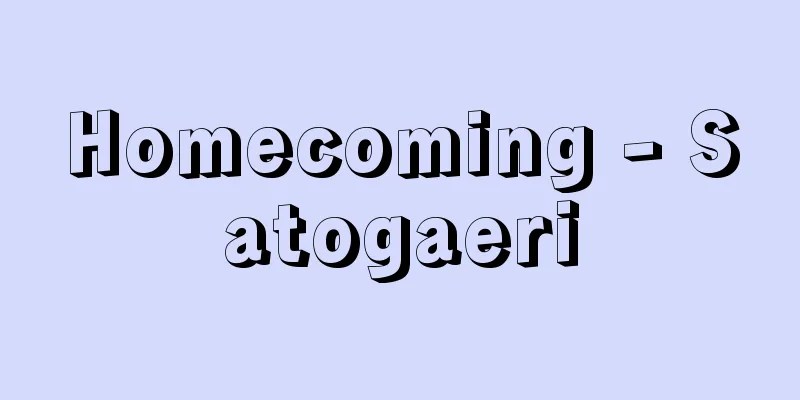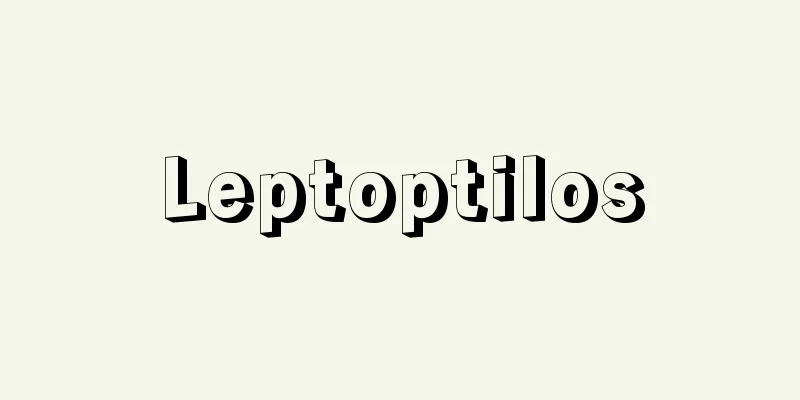Chigaya - Chigaya

|
A perennial grass of the grass family (APG classification: Poaceae). The rhizome is covered with scales, develops and spreads horizontally deep underground, is extremely tough, and does not die even if the above-ground part is burned. The culm is upright and 30-80 cm tall. From April to June, a cylindrical panicle covered with white hairs is produced at the top of the culm. The spikelet is about 4 mm long and contains two florets. The spikelets are almost identical in shape and in pairs, with long white hairs along the base. The spikelets tend to fall off when mature, but the rachis of the florets and the branches of the inflorescence remain for a long time. There are two stamens. It grows in clusters on sunny flatlands and is widely distributed throughout Japan, as well as in warm areas of Asia, Africa, and Europe. The young inflorescences are sweet, called tsubana (thatched flower), and are eaten by children. [Jianchang Xu August 20, 2019] MedicinalThe long, thin rhizome that runs horizontally underground is called bokon or haku-zhaokon in traditional Chinese medicine. In addition to its diuretic and hemostatic effects, it also has the effect of clearing heat from within the body (clearing heat), so it is used to treat problems such as difficulty urinating, edema, hematuria, nosebleeds, hematemesis, dry mouth, nephritis, jaundice, and pneumonia. It is also said to have the effect of eliminating pinworms. [Motoo Nagasawa, August 20, 2019] ©Kanzo Otawa "> Imperata cylindrica (specimen drawing) Source: Shogakukan Encyclopedia Nipponica About Encyclopedia Nipponica Information | Legend |
|
イネ科(APG分類:イネ科)の多年草。根茎は鱗片(りんぺん)に覆われ、発達して深く地中を横にはい、きわめてじょうぶで、地上部が焼き払われても枯死しない。稈(かん)は直立し、高さ30~80センチメートル。4~6月、稈頂に白毛に覆われた円柱状の円錐(えんすい)花序をつくる。小穂は長さ約4ミリメートル、小花は2個。小穂は対(つい)をなしてほぼ同形、基盤とともに白い長毛がある。小穂は成熟すると脱落しやすいが、小花穂の軸と花序の分枝は長く残る。雄しべは2本。日当りのよい平地に群生し、日本全土、およびアジア、アフリカ、ヨーロッパの暖地に広く分布する。若い花序は甘味があり、ツバナ(茅花)と称し、子供が食べる。 [許 建 昌 2019年8月20日] 薬用地下を長く横に走っている細い根茎を、漢方では茅根(ぼうこん)または白(はく)茅根と称する。これには、利尿、止血作用のほか、身体内部の熱を除く作用(清熱)があるため、小便不利、浮腫(ふしゅ)、血尿、鼻血、吐血、口渇、腎炎(じんえん)、黄疸(おうだん)、肺炎などの治療に用いる。また、蟯虫(ぎょうちゅう)駆除作用もあるといわれている。 [長沢元夫 2019年8月20日] ©大多和鐘三"> チガヤ〔標本画〕 出典 小学館 日本大百科全書(ニッポニカ)日本大百科全書(ニッポニカ)について 情報 | 凡例 |
Recommend
Garo tribe - Garo (English spelling)
A tribe in western Assam, in what is now Meghalaya...
Shiga Highlands
Located in the northeastern part of Nagano Prefec...
Bone Buddha - Kotsubotoke
〘noun〙① Bones after cremation. A person who has be...
Ministry of Justice
The Ministry of Justice is a national administrat...
Cafeteria - Cafeteria (English spelling) Spanish
The original meaning is coffee shop. By extension...
Flint corn (English spelling) flintcorn
…It is mainly used as feed and for industrial pur...
Takinosuke Yamamoto
A social educator from the Meiji to early Showa p...
Brown-Séquard's syndrome
When one side of the spinal cord is damaged, a spe...
Rekidaihoan - Historical Treasures
This is a collection of diplomatic documents and ...
Hokan - Hokan
A man whose occupation is to add entertainment to...
Thurn und Taxis
This family was in charge of postal services in Ge...
Letter of Inmunitate Privilege
…Inmunitas was a legal term in the late ancient R...
Contemporary Chronicles - Toudaiki
A diary-style chronicle from the early modern per...
Nautilus scrobiculata
… [Ikuo Obata]. … *Some of the terminology that m...
Rahman, Mujibur
Born: March 17, 1920, Faridpur, Bengal Died: Augus...







![Higashine [city] - Higashine](/upload/images/67cc99b030014.webp)

